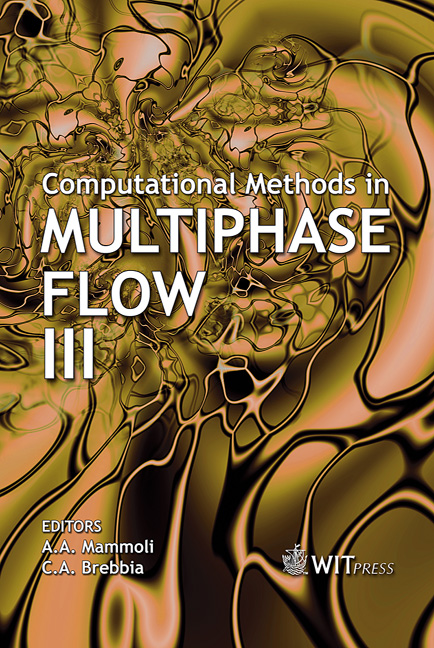A Linearly Semi-implicit AMR Method For 1D Gas-liquid Flows
Price
Free (open access)
Transaction
Volume
50
Pages
10
Published
2005
Size
407 kb
Paper DOI
10.2495/MPF050271
Copyright
WIT Press
Author(s)
N. Andrianov, F. Coquel, M. Postel & Q.-H. Tran
Abstract
We consider a drift-flux model for the numerical solution of 1D gas-liquid flows in pipes. The model is given by a set of conservation laws, consisting of two continuity equations for the two phases, and a single momentum equation for the mixture. The model is closed by providing a slip law, i.e., an empirical relation between the velocities of two phases. There are two principal issues concerning the numerical solution of the model. Firstly, for certain slip laws, the model is not hyperbolic. Secondly, there are two very different time scales in the problem: the slow one, related to the transport, and the fast one, related to propagation of acoustic waves. In practical applications, the precise resolution of the fast scale is not important. We employ a relaxation method to deal with potential non-hyperbolicity of the model. In order to account for the different time scales of the model, we use a linearly semi-implicit version of the scheme. Furthermore, we apply the resulting finite volume scheme on a dynamically adaptive grid. This allows us to obtain a significant acceleration of the computation. Keywords: finite volumes, adaptive mesh refinement, relaxation, drift-flux model, slug flow. 1 Introduction We consider a two-phase, two-component flow of oil and gas in the pipelines during the offshore oil production. Since the pipeline is typically laid on the sea bottom, the pipeline slope is in general not constant. The change of the slope can lead to the formation of the slug flow, which is characterized by abrupt changes in the flow velocity, pressure, etc. The flow becomes highly unsteady, which is undesirable for the oil production. Given the pipeline geometry, the task of the mathematical modeling is to predict the resulting flow regime.
Keywords
finite volumes, adaptive mesh refinement, relaxation, drift-flux model, slug flow.





